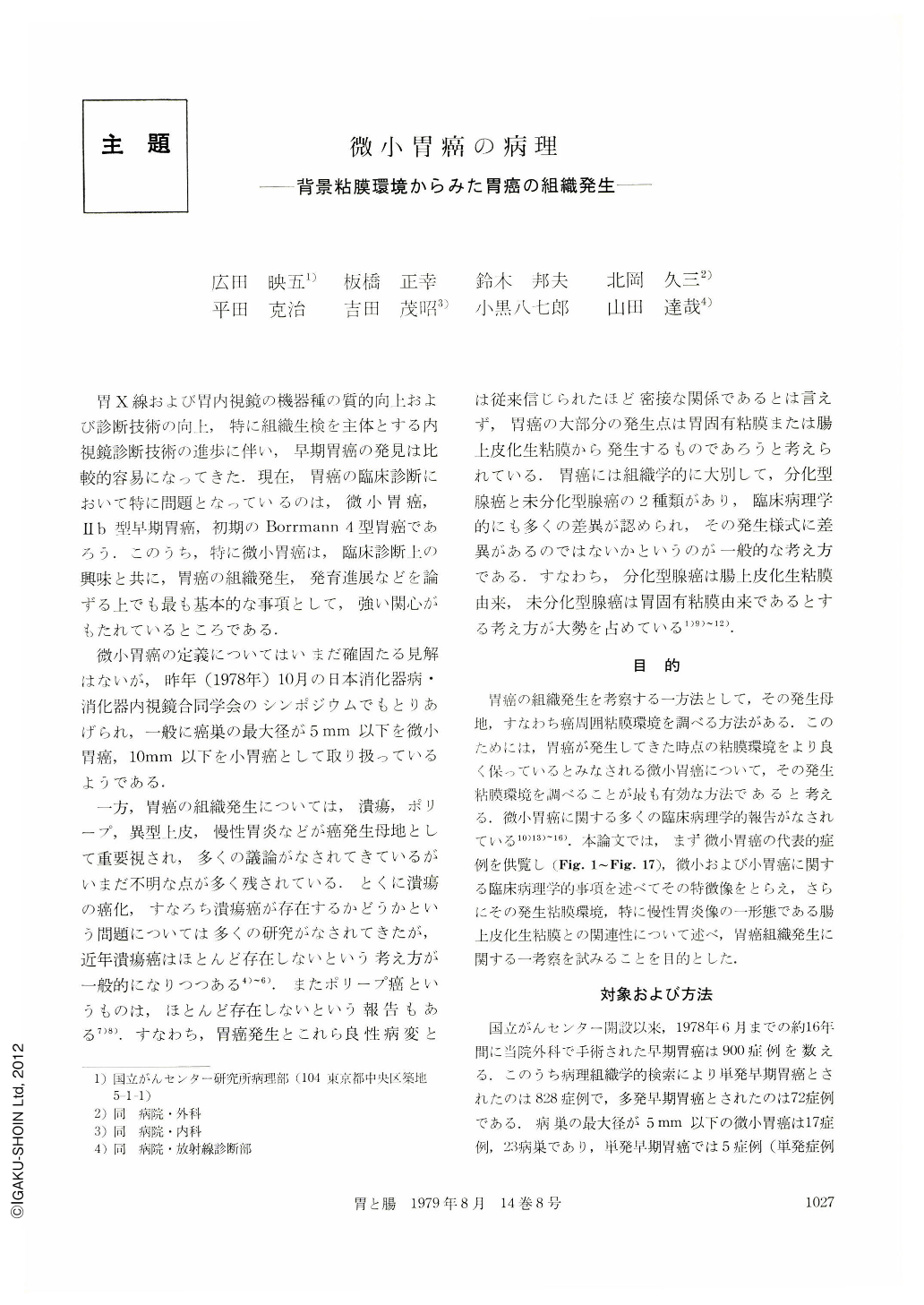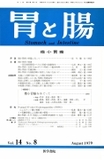Japanese
English
- 有料閲覧
- Abstract 文献概要
- 1ページ目 Look Inside
胃X線および胃内視鏡の機器種の質的向上および診断技術の向上,特に組織生検を主体とする内視鏡診断技術の進歩に伴い,早期胃癌の発見は比較的容易になってきた.現在,胃癌の臨床診断において特に問題となっているのは,微小胃癌,Ⅱb型早期胃癌,初期のBorrmann4型胃癌であろう.このうち,特に微小胃癌は,臨床診断上の興味と共に,胃癌の組織発生,発育進展などを論ずる上でも最も基本的な事項として,強い関心がもたれているところである.
微小胃癌の定義についてはいまだ確固たる見解はないが,昨年(1978年)10月の日本消化器病・消化器内視鏡合同学会のシンポジウムでもとりあげられ,一般に癌巣の最大径が5mm以下を微小胃癌,10mm以下を小胃癌として取り扱っているようである.
Clinico- and histo-pathological study was done on 70 lesions (63 cases) of early gastric cancer smaller than 10 mm in the maximum diameter. These cases are from a consecutive series of 900 cases of early gastric cancer which were surgically resected at the National Cancer Center Hospital from 1962 through June 30, 1978. These small gastric lesions were divided into two groups; “micro-gastric cancer” (23 of 70 lesions): smaller than 5mm in the maximum diameter, and “small gastric cancer”(47 of 7O lesions): from 6 to 10 mm in the maximum diameter.
1) Significant difference in the frequency of sm-invasion was found between the “micro-gastric cancer” (4.3%: 1/23) and the “small gastric cancer” (21.3% 10/47).
2) Fourty three percentage of “micro-gastric cancer” (10/23 lesions) were macroscopic type Ⅱb, and elevated lesions such as Ⅰ or Ⅱa were 17% of 23 lesions, and depressed lesions such as Ⅱc or Ⅲ were 39.1% (9/23). And all of the “small gastric cancer” (6~10mm) were either depressed or elevated lesions. These findings suggest that most of gastric cancer, at least 43% (almost half) of them, occur in the flat gastric mucosa; de novo, not secondarily in polypoid or ulcerative lesions, and that they become depressed or elevated when they grow larger.
3) “Micro- and small gastric cancer” as one of either single primary gastric cancers or multiple primary gastric cancers showed the almost same clinicopathological characteristics as those of single or multiple primary gastric cancer, respectively, of the whole early gastric cancer. Namely, multiple primary cancers even if they are very small, showed the following clinicopathological findings in comparison with single primary gastric cancer; older agedistribution, higher male/female ratio, higher frequency of elevated lesion (Ⅰ and Ⅱa type), higher frequency of differentiated type-adenocarcinoma and lower frequency of an association of peptic ulcer.
4) Histological types of “micro- and small gastric cancer” showed a close relationship with intestinal metaplasia in the surrounding gastric mucosa. Well differentiated adenocarcinoma was found more frequently in the area of gastric mucosa with diffusely distributed intestinal metaplasia than in the area without intestinal metaplasia. Undifferentiated type gastric carcinoma showed the converse tendency.
5) Age-factor seems to have some influence on the histological type of “micro- and small gastric cancer” independently from the influence of intestinal metaplasia.

Copyright © 1979, Igaku-Shoin Ltd. All rights reserved.


